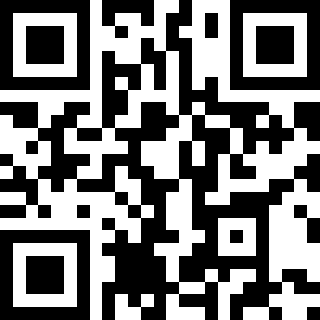QA Engineer
100+ QA Engineer Interview Questions and Answers for Freshers

Asked in 3Pillar Global

Q. What are the roles and responsibilities of a Quality Assurance Engineer?
QA Engineer ensures software quality by planning, designing, and executing tests.
Develop and execute test cases
Identify and report defects
Collaborate with developers to resolve issues
Ensure compliance with quality standards
Continuously improve testing processes

Asked in FinIQ Consulting

Q. Explain how you would approach testing an application in a specific scenario.
I would follow a structured approach, starting with requirements analysis and ending with regression testing.
Understand requirements: Review functional and non-functional requirements to identify key features.
Create test plan: Outline the scope, resources, schedule, and testing types (e.g., functional, performance).
Design test cases: Develop detailed test cases based on requirements, including positive and negative scenarios.
Set up test environment: Ensure the testing environ...read more
Asked in Connect Lab

Q. All types of testing and their definitions, Differences and where to use.
Different types of testing and their definitions, differences, and use cases.
Unit testing: testing individual units or components of the software
Integration testing: testing how different units or components work together
System testing: testing the entire system as a whole
Acceptance testing: testing if the system meets the requirements and is ready for release
Regression testing: testing to ensure that changes or updates to the system have not caused any new issues
Performance ...read more

Asked in Imperial Auto Industries

Q. What is Quality & name 7 QC tools
Quality is the degree of excellence of a product or service. 7 QC tools are used to identify and solve quality problems.
Quality is meeting or exceeding customer expectations
QC tools include Pareto chart, fishbone diagram, control chart, scatter diagram, histogram, flowchart, and check sheet
These tools help identify and solve quality problems
They are used in various industries such as manufacturing, healthcare, and software development
Asked in Connect Lab

Q. Write test cases for a feature like WhatsApp status.
Test cases for WhatsApp Status feature to ensure functionality, usability, and performance are thoroughly evaluated.
Verify user can add a status update with text, image, or video.
Check if the status is visible to selected contacts.
Ensure status updates can be deleted by the user.
Test the duration for which the status remains visible (24 hours).
Validate notifications for contacts when a new status is posted.
Check for proper handling of media formats (JPEG, PNG, MP4).
Ensure the...read more

Asked in Kanerika Software

Q. What are the selenium suit components What are the limitations of selenium testing..?
Selenium suite components include Selenium IDE, Selenium WebDriver, and Selenium Grid. Limitations include browser compatibility issues and difficulty in testing non-web applications.
Selenium IDE for record and playback
Selenium WebDriver for programmatic interaction
Selenium Grid for distributed testing
Browser compatibility issues
Difficulty in testing non-web applications
QA Engineer Jobs




Asked in DataMetica

Q. Do you know GCP? Do you know bigquery?
Yes, I am familiar with Google Cloud Platform (GCP) and BigQuery.
I have experience working with GCP services such as Compute Engine, Cloud Storage, and BigQuery.
I have used BigQuery for analyzing large datasets and running complex queries.
I am familiar with setting up data pipelines and ETL processes using GCP services.

Asked in Solartis Technology Services

Q. Elaborate on the benefits of automation testing.
Automation testing offers faster feedback, increased test coverage, and improved accuracy.
Faster feedback on code changes
Increased test coverage with the ability to run more tests in less time
Improved accuracy and consistency of test results
Reduced testing costs and time
Ability to test in different environments and configurations
Identification of defects earlier in the development cycle
Improved team productivity and collaboration
Ability to perform regression testing easily
Exa...read more
Share interview questions and help millions of jobseekers 🌟

Asked in Delfine India Tech

Q. What are serialization and the method of chaining in Rest Assured?
Serialization in Rest Assured converts objects to JSON/XML; chaining allows method calls for concise API testing.
Serialization transforms Java objects into JSON or XML format for API requests.
Example: Using ObjectMapper to convert a Java object to JSON.
Chaining allows multiple method calls in a single statement for cleaner code.
Example: given().when().get('/api/resource').then().statusCode(200);

Asked in Wipro

Q. 1) how to fetch first 50% data from table? 2) about pop up in selenium 3) string question by giving code 4) GitHub commands 5) BDD related questions
Answers to interview questions for QA Engineer position
1) To fetch first 50% data from a table, you can use SQL queries with LIMIT and OFFSET clauses.
2) In Selenium, handling pop-ups can be done using the Alert class or by switching to the pop-up window using window handles.
3) Please provide the specific string question with code to answer it.
4) GitHub commands include git clone, git add, git commit, git push, etc.
5) BDD (Behavior-Driven Development) related questions may inc...read more
Asked in Chillar Payment Solutions Pvt Ltd

Q. What is the difference between an error, a bug, a defect, and a failure?
Error, bug, defect, and failure are all related to software quality issues.
An error is a human mistake that produces an incorrect result.
A bug is a coding mistake that causes unexpected behavior.
A defect is a flaw in the software that prevents it from functioning as intended.
A failure is when the software does not meet its requirements or crashes.
All of these issues can impact the quality of the software and should be addressed during testing and development.
For example, an e...read more

Asked in Advent Global Solutions

Q. Do you know the Servers? Which companies maintain the servers?
Yes, I am familiar with servers and their maintenance. Various companies maintain servers including Amazon, Microsoft, and Google.
I have experience working with servers and their maintenance.
Companies like Amazon, Microsoft, and Google maintain servers.
I am familiar with server hardware and software components.
I have knowledge of server security and backup procedures.
Asked in UPDOER Technology

Q. Name five major exceptions you encountered during automation.
Five major exceptions encountered in automation testing
NoSuchElementException
TimeoutException
StaleElementReferenceException
ElementNotVisibleException
ElementNotInteractableException
Asked in Navatar Group

Q. What is the concept of manual testing and test case writing?
Manual testing involves executing test cases without the use of automation tools. Test case writing is the process of documenting steps to test a specific functionality.
Manual testing is the process of executing test cases by hand to identify software defects.
Test case writing involves documenting detailed steps to test a specific functionality or feature.
Manual testing requires human intervention to observe and verify the expected behavior of the software.
Test cases should b...read more

Asked in Kanerika Software

Q. How do you type text into an input box using Selenium?
To type text in an input box using Selenium, use the sendKeys() method.
Locate the input box using a locator strategy
Use the sendKeys() method to enter text into the input box
Example: driver.findElement(By.id("inputBoxId")).sendKeys("Text to be entered")

Asked in FinIQ Consulting

Q. Tell me something that is not mentioned in your resume?
I have a passion for automation testing, which isn't highlighted in my resume but has greatly enhanced my QA skills.
I developed a suite of automated tests using Selenium, reducing manual testing time by 40%.
I contributed to a project where I implemented CI/CD pipelines, improving deployment frequency.
I actively participate in QA community forums, sharing knowledge and learning from industry experts.

Asked in FinIQ Consulting

Q. What have you observed during the interview process today?
The interview process has been insightful, highlighting the importance of communication and technical skills in QA roles.
The interviewers were thorough in assessing both technical knowledge and problem-solving abilities.
I noticed a strong emphasis on teamwork and collaboration, which is crucial in QA.
The questions asked were relevant to real-world scenarios, such as handling bugs and testing methodologies.
I appreciated the opportunity to discuss past projects, which allowed m...read more

Asked in Cybage

Q. 1.oops concept 2.what is deffered defect 3.priority and severity of defect 4.tc or test scenarios for order placement 5.sdlc ,stlc 6.geeatest of all no program 6
The interview questions cover topics like oops concepts, deferred defects, defect priority and severity, test scenarios for order placement, SDLC and STLC.
Oops concepts refer to Object-Oriented Programming principles like Inheritance, Polymorphism, Encapsulation, and Abstraction.
Deferred defect is a bug that is not fixed immediately but is scheduled to be fixed in a future release.
Priority of a defect determines the order in which it should be fixed, while severity indicates ...read more

Asked in Zeus Learning

Q. Why Quality Assurance?
Quality Assurance ensures that products meet high standards and customer expectations.
Ensures product quality and reliability
Identifies and fixes defects early in the development process
Increases customer satisfaction and trust in the product
Reduces risks and costs associated with product failures

Asked in Europa Locks

Q. What is MSA and what are its types?
MSA stands for Measurement System Analysis. It is a method to evaluate the measurement system's accuracy, precision, and stability.
MSA is used to ensure that the measurement system is reliable and consistent.
There are two types of MSA: Attribute Agreement Analysis (AAA) and Variable Gage R&R (VGRR).
AAA is used for qualitative data, while VGRR is used for quantitative data.
MSA helps to identify and eliminate the sources of variation in the measurement system.
Examples of measur...read more

Asked in Imperial Auto Industries

Q. What is PPAP and what are the names of all its documents?
PPAP stands for Production Part Approval Process. It is a standardized process in the automotive industry to ensure quality and consistency.
PPAP is a set of documents that are required to be submitted by suppliers to automotive manufacturers before production begins.
The documents include items such as design records, engineering change documents, and control plans.
PPAP is used to ensure that all parts meet the customer's specifications and requirements.
The process includes fi...read more

Asked in Riskcovry

Q. What is Software Testing? Difference between smoke Testing and sanity testing? Test cases for glass water bottle? what Test Case Techniquies?
Software testing is the process of evaluating a software application to find defects and ensure it meets requirements.
Smoke testing is a preliminary test to check if the software build is stable enough for further testing.
Sanity testing is a subset of regression testing, focusing on specific areas of functionality after changes.
Test cases for a glass water bottle could include checking for leaks, verifying the lid seals properly, and ensuring the bottle is dishwasher safe.
Tes...read more

Asked in Foxit

Q. What is SQL and What is the use?
SQL is a programming language used to manage and manipulate relational databases.
SQL stands for Structured Query Language
It is used to create, modify, and query databases
Commonly used in web development and data analysis
Examples of SQL commands include SELECT, INSERT, UPDATE, and DELETE

Asked in Cyfirma

Q. What are the various types of test automation frameworks?
Test automation frameworks streamline the testing process, enhancing efficiency and consistency in software testing.
1. Linear Scripting Framework: Simple and straightforward; scripts are written in a linear fashion. Example: Selenium scripts.
2. Modular Testing Framework: Divides the application into modules, allowing for reusable test scripts. Example: TestNG with Selenium.
3. Data-Driven Framework: Separates test scripts from test data, enabling the same script to run with di...read more
Asked in UPDOER Technology

Q. Write a programe to Reverse a String , then Reverse a specific word in String.
Program to reverse a string and reverse a specific word in the string.
Create a function to reverse a string by iterating through each character and appending it to a new string in reverse order.
Create a function to reverse a specific word in the string by splitting the string into words, finding the specific word, and reversing it.
Combine the two functions to reverse the entire string and a specific word within it.
Asked in UPDOER Technology

Q. Write an SQL query to print the third-highest salary in the Employee table.
Use SQL query to find the third largest salary in Employee table.
Use ORDER BY clause to sort salaries in descending order
Use LIMIT to get the third row
Consider handling ties if multiple employees have the same salary
Asked in PixelQue Software

Q. Inroduction what is manual testing,types,regression testing what is automation testing
Manual testing involves human testers executing test cases without automation tools, while automation testing uses scripts and tools.
Manual Testing: Involves human testers executing test cases step-by-step.
Types of Manual Testing: Includes exploratory testing, usability testing, and acceptance testing.
Regression Testing: Ensures that new code changes do not adversely affect existing functionalities.
Automation Testing: Uses tools and scripts to execute tests automatically, imp...read more

Asked in GoWarranty

Q. What are some different kinds of testing?
Different kinds of testing include functional, performance, security, usability, and exploratory testing.
Functional testing: testing the functionality of the software
Performance testing: testing the speed and responsiveness of the software
Security testing: testing the security of the software
Usability testing: testing the user-friendliness of the software
Exploratory testing: testing the software without a specific test plan

Asked in Imperial Auto Industries

Q. What is FMEA and how is its rating done?
FMEA stands for Failure Mode and Effects Analysis. It is a systematic approach to identify and prevent potential failures in a process or product.
FMEA is used to identify potential failures in a process or product and their effects on the end user.
It involves analyzing the likelihood of failure, severity of the consequences, and the ability to detect and prevent the failure.
The rating is done by assigning a score to each failure mode based on its likelihood, severity, and det...read more

Asked in Impact Analytics

Q. How would you test a login page?
To test a login page, I would verify the functionality of the login form and the security of the login process.
Verify that the login form accepts valid credentials and rejects invalid ones
Check for proper error messages when incorrect credentials are entered
Test the 'forgot password' functionality
Ensure that the login process is secure by checking for HTTPS protocol and proper encryption
Test for session management and logout functionality
Interview Questions of Similar Designations
Interview Experiences of Popular Companies





Top Interview Questions for QA Engineer Related Skills



Reviews
Interviews
Salaries
Users

















